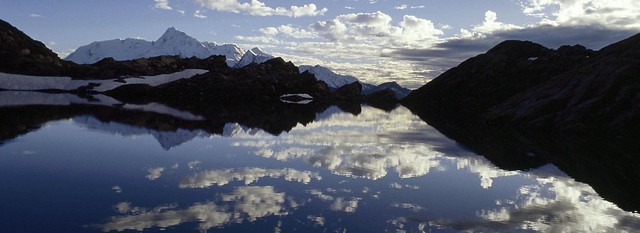-
How to dispose of your Christmas tree in France in 2026
Dumping an old tree on the pavement, in a park or in woodland is illegal, and can result in a fine
-
More than a quarter of new car registrations in France are electric
EV sales hit new record in November 2025
-
Veggie burgers and plant-based sausages: French farmers and consumers react to name ruling delay
The EU failed to reach final agreement to draft rules governing plant-based naming
Make sense of... France's national parks

FRANCE has 10 national parks – and there are plans for two more, with one in Champagne and Burgundy opening in 2019.
As in Britain, they are all in inhabited areas (this is in contrast to, for example, the US, where national parks are often in wilderness areas).
The parks have a special status meaning they are granted extra protection for their outstanding natural environment. One of the effects is that hunting, picking (berries and mushrooms etc) and fishing are strictly limited and building and traffic are very much restricted.
The scientific interest of the area’s habitats, fauna and flora is emphasised more than developing tourism. However, enjoying the parks respectfully, with activities such as hiking – and in some parks, mountain biking and horse riding – are widely encouraged. In the Cévennes, for example, there are more than 3,500km of marked paths and the park produces 20 walking guides with 275 routes, including many short ones for families.
Each park consists of two main areas: the ‘heart of the park’ where regulations are strictest and a membership zone (aire d’adhesion), made up of surrounding communes which have signed a charter on sustainable development principles.
At present the seven national parks in metropolitan France are all in the south and south-east and most of them are in mountain areas (the three additional ones are in Guadeloupe, Guyane and La Réunion).
However this is set to change, with plans under way to create a new one in an area of lowland forests in the north – provisionally called the park “between Champagne and Burgundy”. (update: the name being used for the project at the moment is Forêts de Champagne et Bourgogne – it will be created in 2019)
National parks are set up by decree by the Conseil des Ministres (French cabinet).
Creating new ones was agreed at an environmental conference in 2007, including the Calanques and one in a wetland area which has yet to be designated.
The aim of the new parks is to ensure that more diverse kinds of environment are represented by 2019.
Each park has its own body to manage it, then they are all overseen by the national body Parcs Nationaux de France, which is based in Montpellier.
Detail of the parks can be seen zooming in on the Parc National global atlas and clicking on ‘espaces protégés’).You can also look at the general park site where each park has a dedicated website with photographs and visiting details.
France's first national park opened in 1963
France was fairly late in designating national parks with the first being the Parc national de la Vanoise in Savoie, in 1963. Yellowstone in the US was the world’s first such park, in 1872 and the UK’s first were in 1951. The initial impetus in France was the near extinction of the Alpine ibex in the Vanoise massif.
The seven parks in Metropolitan France are:
1 Vanoise - 1963; 29 communes (21 in the heart of the park). Twinned with the adjoining Gran Paradiso national park in Italy. A major focus is in balancing protection of nature with proximity to the world’s largest area of ski pistes.
2 Pyrenees – 1967; 86 communes (six in the heart) in the Pyrénées-Atlantiques and Hautes-Pyrénées. Popular with hikers, it is the most visited national park. Sheep farming is important here.
3 Cévennes – 1970; 152 communes (55 in the heart) in the Lozère, Gard and Ardèche. The area was traditionally strongly Protestant and its history is linked to the Wars of Religion. Today it is under increasing pressure from building speculation and tourism. There are efforts to develop small appropriate infrastructures for people to discover the area respectfully.
4 Calanques – 2012; six communes (three in the heart) in the Bouches-du-Rhône. It includes spectacular cliffs falling down to the Mediterranean and a large protected marine area. The ‘heart’ includes 43,500 ha of sea.
5 Port-Cros – 1963; 11 communes (1 in the heart) in the Var. Centred on the Island of Port-Cros, where some tourism was developed between the world wars attracting famous writers. It is home to many bird and fish species. The heart also includes most of the island of Porquerolles as well as the tiny Ile de Bagaud which is a ‘réserve intégrale’ – a strictly protected nature reserve within a national park.
6 Mercantour – 1979; 28 communes (27 in the heart) in the Alpes-Maritimes. Home to wolves, mountain goat species and wild boar; its ecological diversity is due to its position at the crossroads between the Alpes, Mediterranean, Liguria and Provence. It features Bronze Age carvings in the Vallée des Merveilles.
7 Ecrins – 1973; 61 communes (26 in the heart) in Hautes-Alpes and Isère. This park has spectacular mountain scenery, including glaciers and a rich variety of plants and animals.

























